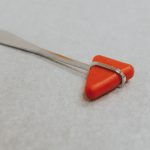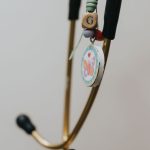Share
Gender Inequity in Medicine and the Gender Pay Gap
Back to MessengerBy Dr. Liana Hwang
Read time: 4 minutes
This year, for the first time ever, we celebrated Canadian Women Physicians Day on March 11. This was the date of licensure of Dr. Jennie Trout, the first woman licensed to practise medicine in Canada in 1875. As Canadian medical schools did not accept female students at the time, Dr. Trout studied in Pennsylvania before opening her own practice in Toronto, which included a free dispensary for patients in financial need. She went on to help found the Women’s Medical College in Kingston1.
By creating Canadian Women Physicians Day, I want to celebrate the hurdles women have overcome and prompt reflection on the challenges that still remain. Today, more than 40 per cent of Canadian physicians are women2, the majority of medical students are women2 and it’s anticipated that by 2030, 50 per cent of all physicians will be women3. Yet, despite the shifting demographics, gender inequity within medicine persists; although beyond the scope of this article, I acknowledge that gender is nonbinary, and that transgender and gender nonbinary physicians also face discrimination and inequity4.
One of the starkest examples of gender inequity in medicine is the existence of a gender pay gap. There is very little Alberta-specific data, but a gender pay gap has been consistently demonstrated in multiple other jurisdictions. In their excellent article, “Closing the gender pay gap in Canadian medicine,” Dr. Michelle Cohen and Dr. Tara Kiran demonstrate that Canadian women physicians consistently earn less than their male colleagues5. This gap exists across all specialties and cannot be fully accounted for by individual factors, such as hours worked, efficiency, age and experience5, 6. Drs. Cohen and Kiran draw attention to the systemic causes of the gender pay gap, including gender norms, referral bias and inequity within the fee schedule itself, with procedures specific to female patients often paid at a lower rate than comparable procedures in male patients5. In Alberta, for example, a prenatal visit pays $37.02 while other routine office visits pay $38.027.
Women physicians tend to have longer patient encounters and are more likely to address psychosocial issues8, they are more likely to follow clinical guidelines9 and they spend more time on counselling and preventive care10. All of these practice behaviours result in fewer ER visits and hospital admissions11 as well as lower hospital readmission, complication and mortality rates12, 13. Fee schedules should compensate these important aspects of care fairly and adequately; that they do not has an unintended but nonetheless disproportionate impact on women. This is a clear example of gender discrimination.
Although it is true that any physician can choose their style of practice, research in other workplace settings reveals that women are subject to two particular types of stereotyping. Descriptive stereotypes refer to our expectations about the characteristics of a particular gender, and prescriptive stereotypes refer to how we expect individuals of a particular gender to behave. Women are generally expected to be warm, communal, nurturing, caring, helpful and gentle14. In one research study, both women and men were asked to help prepare for a meeting. Women who agreed to help were rated less favourably than men who offered help; women who declined to help were rated consistently lower than men who declined15. Women physicians who do not conform to gender stereotypes may run into issues with patient satisfaction. At the same time, women who do spend time with their patients may not get the recognition they deserve.
The pay gap is just one example of gender inequity in medicine. The reasons for gender inequity in medicine are complex, and so must be the solutions. While it is tempting to focus on women’s individual behaviours, such as “women should see more patients” or “women should choose to apply for more leadership positions,” doing so ignores the underlying systemic factors and this, in turn, perpetuates injustice by asking those who are already disadvantaged by the system to shoulder the additional burden and labour of solving those challenges.
Meaningful systemic change is possible and necessary, and could include enhancing parental leave programs, collecting relevant data stratified by gender, developing institutional policies using equity, diversity and inclusivity frameworks and prioritizing proportional representation of women in leadership and academics, among many other actions. We owe it to our colleagues and, above all, our patients to build a system where everyone is supported to reach their full capabilities.
References
1 Raymond, Katrine. Jennie Trout. Available: https://www.thecanadianencyclopedia.ca/en/article/jennie-trout (accessed 2021 Jul 29)
2 Quick facts on Canada’s physicians. Available: https://www.cma.ca/quick-facts-canadas-physicians (accessed 2021 Jul 26)
3 Addressing gender equity and diversity in Canada’s medical profession: a review. Available: https://www.cma.ca/sites/default/files/pdf/Ethics/report-2018-equity-diversity-medicine-e.pdf (accessed 2021 Jul 25)
4 Dimant O, Cook T, Greene R et al. Experiences of transgender and gender nonbinary medical students and physicians. Transgend Health 2019; 4: 209-216.
5 Cohen M and Kiran T. Closing the gender pay gap in Canadian medicine. CMAJ 2020; 192(35): E1011-E1017.
6 Tricco A, Bourgeault I, Moore A et al. Advancing gender equity in medicine. CMAJ 2021; 193 (7): E244-E250.
7 Alberta Medical Association Fee Navigator. Available: https://www.albertadoctors.org/fee-navigator/hsc/03.03B (accessed 2021 Jul 29)
8 Boter DL, Hall JA and Aoki Y. Physician gender effects in medical communication: a meta-analytic review. JAMA 2002; 288: 756-764.
9 Baumhakel M, Muller U and Bohm M. Influence of gender of physicians and patients on guideline recommended treatment of chronic heart failure in a cross-sectional study. Eur J Heart Fail 2009; 11(3): 299-303.
10 Delpech R, Bloy G, Panjo H et al. Physicians’ preventive practices: more frequently performed for male patients and by female physicians. BMC Health Serv Res 2020; 20: 331-
11 Dahrouge S, Seale E, Hogg W et al. A comprehensive assessment of family physician gender and quality of care: a cross-sectional analysis in Ontario, Canada. Medical Care 2016; 54(3): 277-286.
12 Tsugawa Y, Jena A, Figueroa J et al. Comparison of hospital mortality and readmission rates for medicare patients treated by male vs female physicians. JAMA Intern Med 2017; 177(2): 206-213.
13 Wallis C, Ravi B, Coburn N, et al. Comparison of postoperative outcomes among patients treated by male and female surgeons: a population based matched cohort study. BMJ 2017; 359: j4366.
14 Heilman M. Gender stereotypes and workplace bias. Research in Organizational Behavior 2012; 32: 113-135.
15 Heilman M. Description and prescription: how gender stereotypes prevent women’s ascent up the organizational ladder. 2002 Journal of Social Issues 2002; 57: 657-674.
 |
Dr. Liana Hwang (she/her) is a family physician who divides her time between community family practice, refugee health, low risk obstetrics and surgery in Canmore and Calgary, Alta. She is a member of the Board of Directors of Canadian Women in Medicine, a non-profit organization that supports women physicians at all stages of their career through advocacy, mentorship, CME, an annual conference, and the annual celebration of Canadian Women Physicians Day.
She wishes to acknowledge that she lives on the traditional territories of the people of the Treaty 7 region, which includes the Blackfoot Confederacy comprising the Siksikaa, Piikani, Kainai (gana) First Nations as well as the Tsuut’ina First Nation and the Stoney Nakoda First Nations. The City of Calgary is also home to Metis Nation of Alberta, Region 3. As physicians, may we adopt a “Two-Eyed Seeing” framework as we work to address gaps in health outcomes between Aboriginal and non-Aboriginal communities and journey towards reconciliation. |




















Comments for this post are now closed. If you would like to share your feedback on this topic, please email support@cpsa.ca.